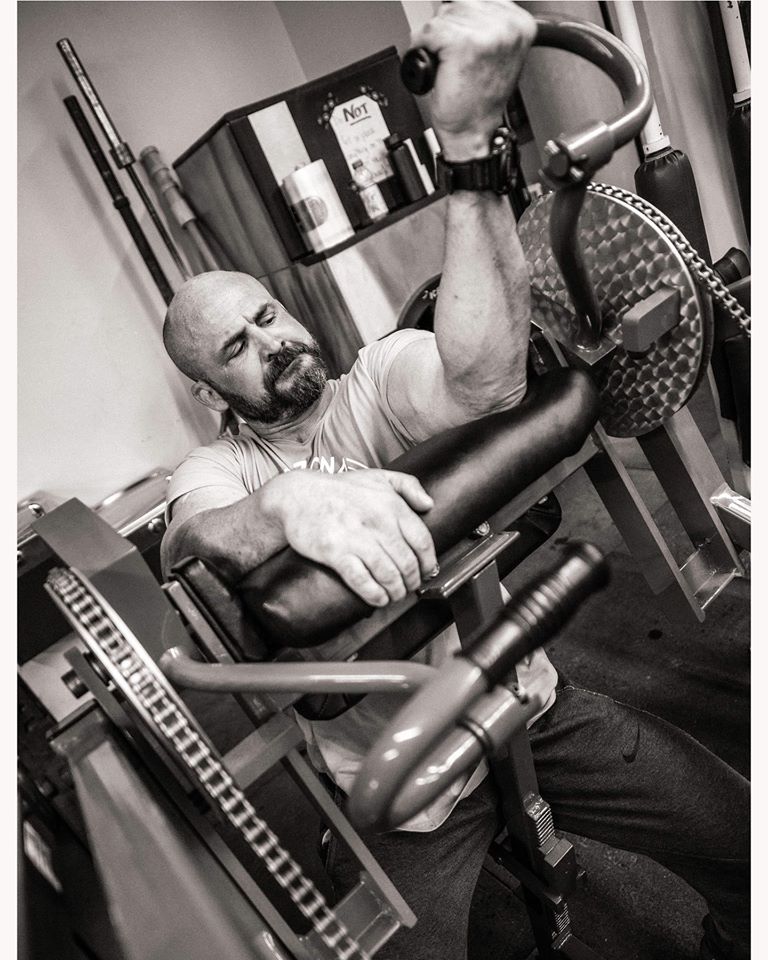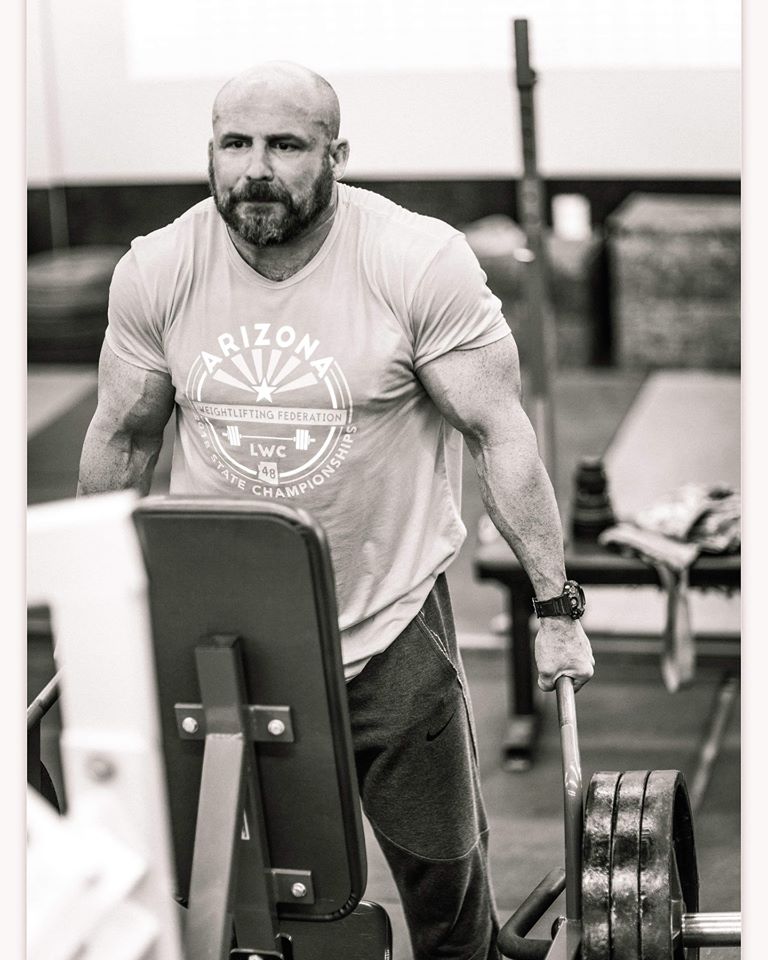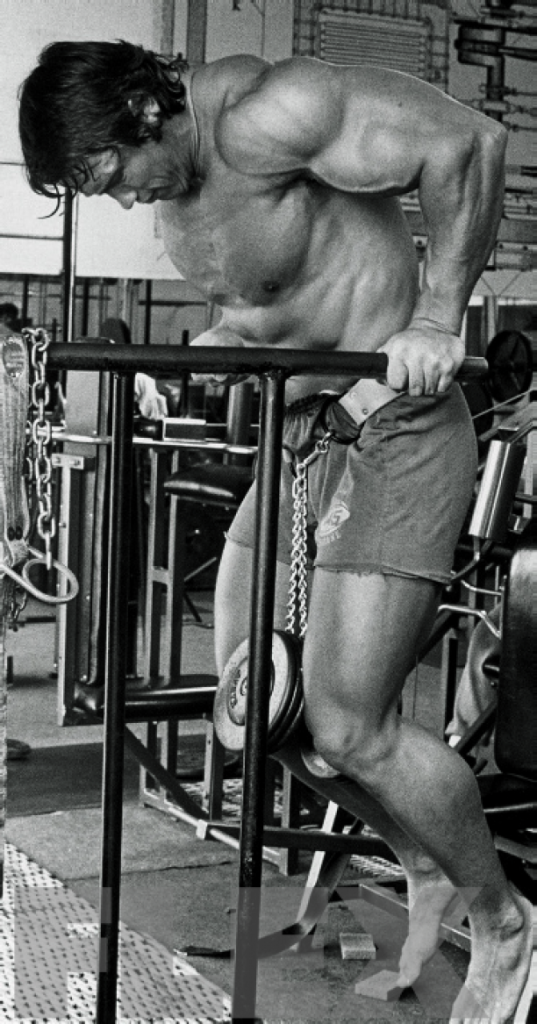In the most basic terms, Hypertrophy refers to an increase in the size of a…
“Teach the Process, not the Product” an interview with Coach Patrick Cullen-Carroll
Currently the weightlifting coach at CrossFit Renatus, Coach Cullen-Carroll has had a long career promoting long-term athletic development and injury prevention for young athletes. He served as the Chair of the Executive Board of the NSCA Youth Special Interest Group, and also as the Chair of the Coaches/Education/Program Committee of USA Weightlifting.
To familiarize our readers with your work, could you speak a bit about your background and how you found your way to weightlifting?
Well, I don’t think of myself as a great lifter at any given point. I came out of powerlifting, which is what we did in high school. We had no squat racks. We had a bunch of literally park bench type benches and some bars. The funny thing about doing squats with this setup—we had to do a lot of pulls. We didn’t have a rack so two guys would have to pull the bar to their shoulders and the other guy would get under it and squat the bar.
That started me on the path. I knew I wanted to coach—to be a football coach—and I started asking what I had to do to get my players in the best shape they could be in. That kept me around lifting, around strength and power development. I went to college and started as a football coach and a strength coach. As I started moving forward, though, I started doing more weightlifting.
Back around ’75, I started looking at the Olympic lifts. This was also when I got involved with the NSCA. I remember someone described weightlifting to me as “speed-strength,” and I thought “well, that’s what we want.” So around the mid to late 70s, I started shifting more toward clean and jerks. Then, I started to snatch. Personally, I love the snatch. I know everyone says the clean and jerk is the “king of exercises,” and maybe so, but in terms of total movement and speed, the snatch is so fantastic. Even back before they did functional movement screens, people were talking about overhead squats as a great test for finding mobility.
As I got into weightlifting, I took a Level 1 course to understand the snatch better. It was such a curious and technical lift. Bob Takano and John Garhammer were in charge of my certification course. There must have been around 18 guys coaching the class of 10 attendees. And this class just kicked my butt. I was a powerlifter; I was squatting over 500lbs then. I thought I was just the king of the world, and after a few hours with these weightlifting coaches, I was hurting everywhere—my back, my traps.
Eventually, I gravitated entirely toward the Olympic lifts. Back in the late 80s, when I was still a part of the physical education program at a junior high school, the women’s PE teacher asked that I teach the young ladies how to lift weights. So we taught our kids to lift and they began competing in local meets. Several kids went to Nationals and to international teams.
There’s a possibility in the next week or so that I might take on the next adventure of my life—I might go back to a high school and be the athletic director of their PE program. Right now, I think that’s what we need to do—we need to bring physical education back into the spotlight. Much of the research we’re seeing indicates that physical education and movement in schools is extremely, extremely important. NSCA is working on putting together a program to teach kids not just weightlifting, but total movement. Right now, we teach sport-based movement, but not basic movement. Kids end up specializing in softball, soccer, etc. by seven years old without quality, fundamental movement patterns. So we’re having a terrible attrition rate. We need to look at redeveloping physical education to create more well-rounded, overall programs.
Could you speak a bit about your role as the Chair of the Executive Board of the NSCA Youth Special Interest Group?
I was the chair for six years. I’m not anymore, but I’m now on the board. Dr. Rhodri Lloyd will be the new Chair. We’re still going to move forward with long-term athletic development (LTAD) and revamping PE programs. We’ve had a LTAD track for three years now—there’s now an American athletic development model. I think we’re moving very, very quickly. The NSCA is very supportive right now. I can’t say enough good things about Dr. Greg Haff, who’s been a major force as President of the NSCA, and Dr. David Szymanski who’s also helped us push this forward. I think we need to work on injury rates with these kids, and we’re going in the right direction.
What about your work as Chair of USAW’s Coaches/Education/Program Committee?
Leo Totten is now the chair of that. The big thing I pushed there was similar to what I did with the NSCA—working with kids. We met some resistance, and I don’t think that’s over, but it’ll be interesting to see how it goes with new people coming into the organization: such as Tamas Feher and Pyrros Dimas… I think they’re going to move toward LTAD too. I’m optimistic. You know, I’m at an age and time where I’m ready to become a bit of a spectator. It’s not that I won’t be involved—I’m not going anywhere—but it’ll be nice to watch where others take these initiatives now.
There was a thing called the PEP program – a study they did on 11-14 year-old soccer players. In that study, something like 70-80% of ACL injuries were reduced with what was basically a dynamic warm-up. You know what’s funny, in the late 80s and early 90s, we were doing dynamic movement stuff anyway—have you seen the 1960s PE program YouTube video? – It’s basically CrossFit. We need to get back to a point where we realize pre-hab and injury prevention are important. I think we’re moving in that direction. There are a lot of organizations doing positive things, and with collaboration, they’ll get even further. Imagine if we could get people to spend 15 minutes of every PE class, every practice of whatever sport, on dynamic, fundamental movement patterns. How much better could we be in a year? In three years?
Is there anything else you’d like to add?
I ask young coaches to get involved with the LTAD movement, with the NSCA, and with USAW. Don’t be concerned about heavy weights with kids. I wish that we were not concerned with 13 and under kids doing totals. I wish we were just concerned with them getting good technique. I think we should have kids lifting against kids of their own age—13-year-olds with 13-years-olds; 14-year-olds with 14-year-olds. There’s a huge difference in a year of maturity.
Here’s what’s really important: teach the process and not the product. Especially when you’re looking at an age group between 12-17 years old. There’s a heck of a lot of difference in a kid’s movement patterns in those years. His pull is going to change so much when he’s 5’-nothing and 13 years old and 6’5” and 17 years old. If you stop teaching the process, he’s going to lose so much in those years. Technique, technique, technique. That’s what we need to build the champions we want in weightlifting. We have to take a longer view of things. Consistency and process. That’s what’s important.


